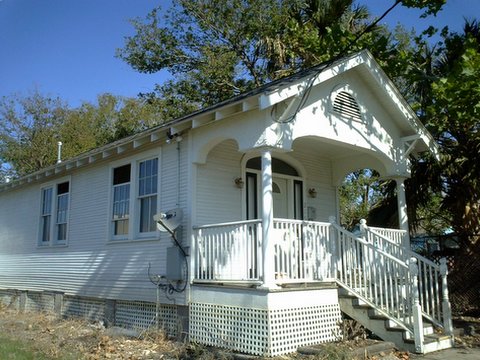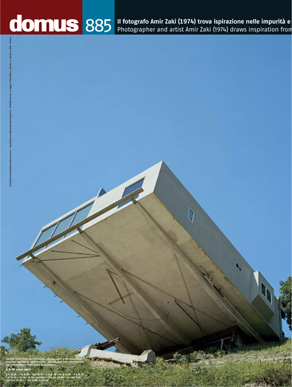Schwarz
View current page
...more recent posts
elmhurst's jamaica savings bank
Samuel H. Gottscho
at the old print shop
domus 885
Cover : Photographer and artist Amir Zaki (1974) draws inspiration from the mutations and impurities in the architectural heritage of the city of Los Angeles, such as these houses designed by Richard Neutra in the ’60s (p. 32), later disavowed by his descendents
A cool roof, or “white roof” -- as simple as a basic coating of light-colored water sealant – is the roof of the future in New York, says Laurie Kerr, an architect in the Office of Sustainable Design, the eco- conscious division of New York City’s Department of Design and Construction. “The city controls maybe one in ten buildings in terms of square footage. Over the next 20 years, all of those buildings should have cool roofs.”
designboom
history of rocking chairs
cersaie fair report - 1000 exhibitors from 30 different countries present the latest
technologies and aesthetic - new trends in bathroom products
ranging from ceramic tiles to sanitary installations and
bathroom furnishings.
m-ch micro compact home
via fab-prefab newsletter 11
What would you do if you were asked to build a house on a rocky island with only five pencil drawings to go by? This was the challenge given to Thomas Heinz, AIA, a renowned Frank Lloyd Wright scholar. The house he was asked to model and execute was designed by Wright in 1950 but never built.
What Heinz had to start with were floor plans, three elevations, a section, and a perspective, with no materials, no dimensions — very few notations at all. Unlike Wright's designs for "Usonian" residences, which followed a rectangular or square grid, this house was to be triangular in plan, based on a grid of equilateral triangles five feet (1.5 meters) on a side.
The design incorporated an existing 60-foot long, 12-foot wide, 12-foot high (18 by 4 by 4 meters), whale-shaped rock extending through the center of the house, and the site presented many other technical challenges for the architect and the builders.
It is quite a thrill: zooming from outer space through cloud layers into your continent, country, state, city and neighborhood, finally onto the roof of your very own house, then zooming back out again, twirling the globe and landing at another spot. But after a while, you might want to explore the higher applications of Google Earth - for example, browsing modern and contemporary architecture.
Pointingit (0lll.com/pointingit) started last month with the sole purpose of linking Google Earth (which only Windows users can download at earth.google.com) to 0lll.com (that's a zero and three L's), a Web site that compiles everyday, not-always-glamorous photographs of architecture.
So far, Pointingit, which is quite complicated to use, has posted fewer than a hundred architectural works, mostly in Europe and mostly new. They have been organized into odd categories: five structures designed by Santiago Calatrava; four banks and insurance company headquarters; four Herzog and de Meuron projects under construction; 14 bridges around the world; seven buildings in São Paulo; three egg-shaped structures; seven houses in Heitzing, a residential district of Vienna, plus all the houses within the estate known as the Werkbundsiedlung; and nine past winners of the RIBA Stirling architecture prize.

Jiml's house in NO's fourth ward.
just heard from fellow digitalmediatree blogger jim louis calling in via cell phone from new orleans louisiana. he's driven back down from virginia to check in on his small flood damaged house in (i believe) the impoverished fourth ward. he promises to send digital photos as e.mail attachments which i will faithfully post here on this page. keep an eye out for pictures to follow here and new information showing up on his page
10/26/05 kenny g whispers the names of two thousand dead soldiers from the iraq war
ive been assigned an internet research project by my mothers technically challenged cousin. john mcdowell (big charlie's son) asked me to research our ancestor samuel mcdowell's (aka super sam) involvement in the spanish conspiracy.
notes follow in the comments section
civil war era house in washington va
oldest english church in the us at jamestown va
christopher wren building at william and mary
motel postcards of williamsburg
nested in the heart of colonial wiliamsburg is an interesting enigma. some where along the way the williamsburg inn built a modern annex. it appears to date from the late 50's early 60's. a smart looking late international style two story block of painted white brick apartments with flat roofs, sliding glass doors and handsome little squared off balconies and terraces overlooking the tennis courts. there seams to be no mention of them on line at all. a latter day embarrisment i assume. my relative who lives near by hates them and apologised for them. i assume most of the locals hate them as well. i loved 'em. the white painted brick has been allowed to peal in places giving them a terrific old south patina. i am aware that the rockafeller family has been involved with the CW project since the time of its original restoration. perhaps they recommended someone. i can find nothing on the identity of the architect of this annex. photo follows on 1st comment page of this post.
You know that David Bowie song on Diamond Dogs where he talks about, “Fleas the size of rats suck on rats the size of cats”? Well, most people think he was talking about some imaginary, post-apocalyptic future; but, in actual fact, he’d just spent a few nights sleeping at my flat in the early seventies. We lived by the law of the jungle, man — eat, or be eaten!
There are some who will perceive a confounding desire to gloss over the apocalyptic anxieties that grip the American consciousness, from ground zero to the Gulf Coast. But the show's focus on formal aesthetics does plant it firmly within the Modern's tradition. When Philip Johnson, the founder of the museum's department of architecture, first introduced the International Style to an American audience in the 1930's, he famously stripped the movement of its social and political meanings.
That agenda continued through the cold-war era, when critics charged, with some justification, that the museum's support of abstraction fit neatly within a broader government agenda to project a progressive image to the world.
But in some ways, the show also brings to mind the bent-plywood furniture of Charles and Ray Eames, which became alluring emblems of the postwar American dream. "Safe" seems to be shaped by the innocent belief that good, clever designs can lead to a more enlightened world.
Today, that notion seems naïve. It's hard to remember a time in American history when the unnerving effect of world politics on daily life has been more palpable. A sign in the subway alerting passengers that the police are checking bags and knapsacks triggers a sequence of emotions: fear, repression and, finally, denial. That sign - mounted on a cheap board, with simple lettering - is more likely to leave a lasting imprint than the most beautiful objects in this show.
Composers’ Voices from Ives to Ellington
An Oral History of American Music
Vivian Perlis and Libby Van Cleve
The first opportunity to read—and hear—interviews with and about great American composers and musicians of the early twentieth century
The first decades of the twentieth century were a fertile and fascinating period in American musical history. This book and the two CDs that accompany it present an exceptional collection of interviews with and about the most significant musical figures of the era. Tapping the unparalleled materials contained in the Oral History American Music archive at Yale University, Composers’ Voices from Ives to Ellington is a unique account of what it was like for musicians and composers to live and work in those years. It is also the story of the making of the archive, as told by Vivian Perlis, who personally conducted many of the interviews.
Music aficionados can now hear Eubie Blake describe the birth of ragtime or listen to a firsthand account of how Ira Gershwin came to write those famous lines in “Let’s Call the Whole Thing Off.” In-depth interviews with such figures as Henry Cowell, Virgil Thomson, Aaron Copland, and Duke Ellington are included in the book, which also features chapter introductions and fascinating sidebars, illustrations, and anecdotes throughout. Two CDs complete the set, enabling today’s listener to enjoy the remarkablen experience of hearing the actual voices and the music of American composers of the early twentieth century.
beyondthebeatgeneration
mc5 concert posters

